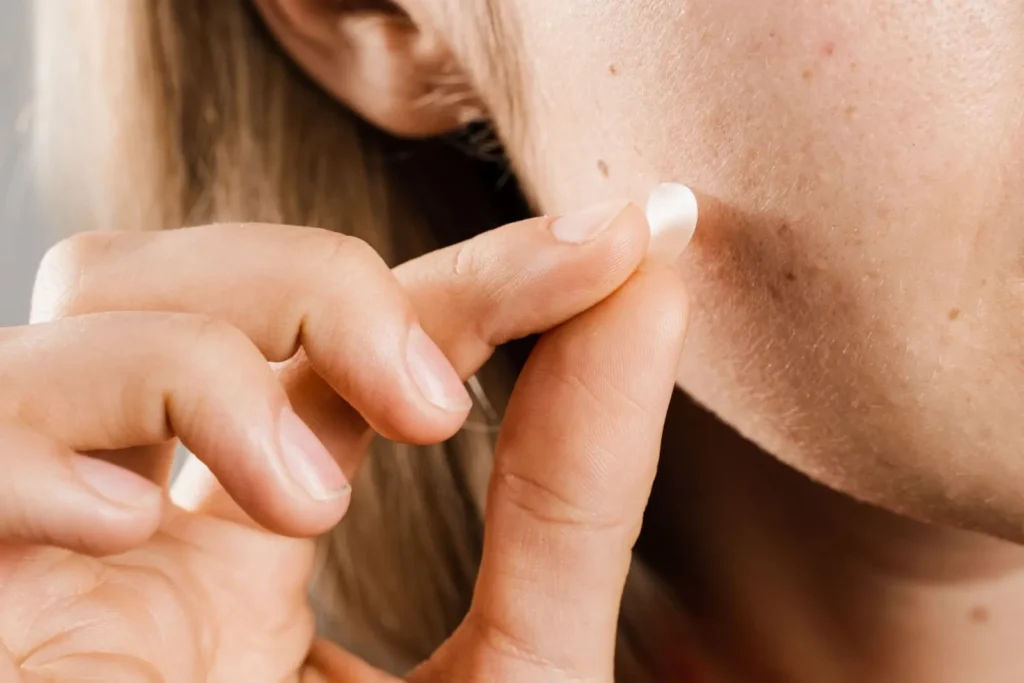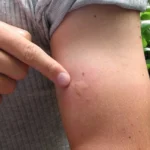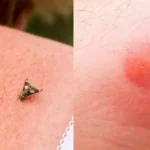
Pimple Patches for Bug Bites: Relief or Just Hype?
Exploring the viral skincare hack that’s taking social media by storm – but does it actually work on insect bites?
The Bug Bite Beauty Hack Everyone’s Talking About
Social media is buzzing with DIY skincare trends, and the latest viral hack has people reaching for their acne patches every time they get bitten by a mosquito. From TikTok tutorials to Instagram stories, thousands are swearing by pimple patches as their go-to solution for bug bite relief.
But as dermatologists know all too well, not every viral beauty trend lives up to the hype. Bug bites present a unique challenge – they’re inflammatory, itchy, and often require different treatment approaches than the acne breakouts these patches were originally designed for.
In this comprehensive guide, we’ll dive deep into the science behind hydrocolloid patches, examine the evidence for their effectiveness on various types of insect bites, and provide expert-backed guidance on when this hack might help – and when it could potentially harm.
Understanding How Pimple Patches Work
What Are Pimple Patches?
Pimple patches, also known as hydrocolloid patches, are small adhesive bandages originally designed to treat acne breakouts. These clear, gel-like patches create a moist healing environment that can help speed up the recovery process for certain types of skin irritations.
The Science Behind Hydrocolloid Technology
Hydrocolloid patches work through a process called moist wound healing. The hydrocolloid material absorbs excess fluid while maintaining optimal moisture levels at the skin’s surface. This environment promotes faster cell regeneration and can help reduce inflammation in some cases.
Acne vs. Bug Bites: Key Differences
While pimple patches excel at treating acne lesions with a “head” or visible pus, bug bites present a different challenge. Mosquito bites, for instance, are inflammatory reactions caused by the body’s immune response to insect saliva, not bacterial infections that create pus.
Understanding this fundamental difference is crucial to managing expectations about what pimple patches can and cannot accomplish when applied to insect bites.
Do Pimple Patches Work on Mosquito Bites?
How Mosquito Bites Behave
When a mosquito bites, it injects anticoagulant saliva into your skin to prevent blood clotting. Your immune system recognizes this as a foreign substance and releases histamine, causing the characteristic swelling, redness, and intense itching.
The Patch Effect on Mosquito Bites
While pimple patches won’t eliminate the underlying immune response causing mosquito bite symptoms, they can provide several benefits. The physical barrier prevents scratching, which reduces the risk of secondary infection and scarring. Some users report that the slight pressure and occlusion can provide modest relief from itching.
Cons: Doesn’t address root cause of itching, limited effectiveness on swelling, can be expensive for frequent use
Can You Use Pimple Patches on Bug Bites?
When and How to Apply Safely
The key to using pimple patches on bug bites lies in proper application and realistic expectations. Clean the bite area gently with soap and water, pat dry, and apply the patch to clean, intact skin. Avoid applying patches to broken skin, open wounds, or bites that show signs of infection.
Potential Risks and Precautions
While generally safe for most people, pimple patches can cause skin irritation in those with sensitive skin or adhesive allergies. The occlusive nature of the patches can sometimes trap bacteria if applied to dirty or infected skin, potentially worsening the situation.
Skin Sensitivity Considerations
Always perform a patch test on a small area of unaffected skin before applying to bug bites, especially if you have a history of contact dermatitis or sensitive skin. Remove the patch immediately if you experience increased redness, burning, or irritation.
Read the Full Article: Can You Use Pimple Patches on Bug Bites?Do Pimple Patches Help Bug Bites?
Situations Where They’re Most Helpful
Pimple patches tend to be most effective on small, localized bug bites that haven’t developed into large welts. They work particularly well for preventing nighttime scratching and can be especially useful for children who have difficulty avoiding the urge to scratch.
When They Fall Short
Large, swollen bites from wasps, bees, or fire ants typically require more aggressive treatment than what a simple hydrocolloid patch can provide. Similarly, bites that have already been scratched open or show signs of infection need proper medical attention rather than cosmetic patches.
Special Use Cases
Pimple patches can be particularly valuable for bug bites on visible areas like the face and hands, where scratching prevention is crucial for avoiding scarring. They also provide a hygienic barrier that can be helpful in environments where re-exposure to insects is likely.
Read the Full Article: Do Pimple Patches Help Bug Bites?What Dermatologists Say
While pimple patches aren’t a miracle cure for bug bites, they can serve as an effective barrier against scratching, which is often the biggest concern with insect bites. The key is understanding that you’re treating the secondary behavior – the scratching – rather than the primary inflammatory response.
Leading dermatologists emphasize that the primary benefit of using pimple patches on bug bites isn’t necessarily the hydrocolloid technology itself, but rather the physical protection they provide. By creating a barrier between your fingers and the bite, these patches can prevent the itch-scratch cycle that often leads to secondary infections and scarring.
Important Safety Notes from Experts
Never apply patches to: Open wounds, infected bites, or areas with active bleeding. Remove immediately if: You experience increased pain, spreading redness, or signs of allergic reaction. Seek medical attention for: Bites that don’t improve within 48-72 hours or show signs of serious infection.
Proven Alternatives to Pimple Patches
🧊 Cold Therapy
Ice packs or cold compresses can numb the area and reduce swelling. Apply for 10-15 minutes at a time, wrapped in a thin cloth to prevent frostbite.
🧴 Calamine Lotion
This classic remedy contains zinc oxide and ferric oxide, which help dry out bites and provide cooling relief. Particularly effective for weeping or oozing bites.
💊 Oral Antihistamines
Medications like Benadryl or Claritin address the root cause of bug bite symptoms by blocking histamine release throughout your system.
🔧 Bug Bite Suction Tools
Devices that use suction to draw out irritants can be effective when used immediately after a bite, before the inflammatory response fully develops.
Each alternative has its place in bug bite treatment. The most effective approach often involves combining methods – for example, using an antihistamine for systemic relief while applying cold therapy for immediate comfort.
Frequently Asked Questions
It’s generally safe to apply a pimple patch shortly after a bite, but clean the area first and ensure the skin isn’t broken. The patch may help prevent scratching from the start, but won’t stop the initial inflammatory response that causes swelling and itching.
For mild spider or ant bites that are similar in size to mosquito bites, patches may provide the same scratching prevention benefits. However, more serious bites from venomous spiders or fire ants require proper medical treatment and shouldn’t be treated with cosmetic patches alone.
Most pimple patches can be left on for 6-12 hours or until they turn white/opaque and lose their adhesion. Remove gently and replace if needed. Don’t leave patches on for more than 24 hours, as this can sometimes cause skin irritation.
Hydrocolloid patches offer some advantages over regular bandages – they’re waterproof, nearly invisible, and designed to stay put during normal activities. However, for pure scratch prevention, a regular bandage can be just as effective and much more cost-efficient.
The Bottom Line: Smart Usage Over Hype
The viral trend of using pimple patches on bug bites isn’t entirely without merit, but it’s important to approach it with realistic expectations. These patches excel at preventing scratching and may provide modest comfort, but they’re not a magical cure for the underlying inflammatory response that makes bug bites so annoying.
For best results, consider pimple patches as one tool in a broader bug bite management strategy. Combine them with proven treatments like antihistamines for systemic relief, cold therapy for immediate comfort, and proper wound care to prevent infection.
Key Takeaways for Safe and Effective Use
Use patches primarily for scratch prevention rather than expecting dramatic healing acceleration. Always clean the bite area before application, never apply to broken or infected skin, and remove immediately if you experience any adverse reactions. Most importantly, seek professional medical advice for severe reactions, multiple bites, or bites that don’t improve within a few days.
Remember, the best approach to bug bite management starts with prevention – use appropriate repellents, wear protective clothing in high-risk areas, and address standing water around your home that might attract mosquitoes.
 Shop Amazon
Shop Amazon

